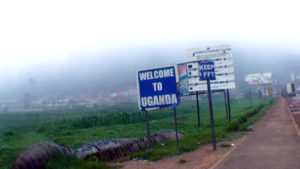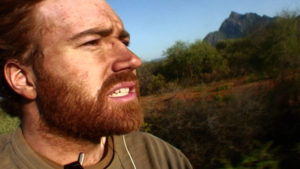Wed 25.04.12:
YAPPITY YAP! The Federated States of Micronesia is divided into four states: Kosrae, Pohnpei, Chuuk and Yap. Funnily enough, Yap is the only state that my spellchecker likes. Each state has its own culture, languages and quirks and each state is made up of many islands, of which one will be the state capital. The state capital of Yap is ‘Yap Proper’ (a name I really like) and that is were we landed the good ship Mell Sembawang this morning, in the town of Colonia.
Anyone paying an amazing amount of attention to my quest might recognise that name: Colonia in Uruguay was the very first town I visited as part of The Odyssey Expedition, back on Thursday January 1 2009.
Uruguay was nation number 1. The Federated States of Micronesia is nation number 196. Wowsers. You’ve come a long way, baby.
I only had about six hours on the island, so I tried to make the most of it. The main drawcard to Yap is the fabled giant stone money, a fascinating yarn if you don’t mind me telling it.
You see, as with most cultures, Yap developed the concept of money many centuries ago – you know, you take something that really has little real worth (say, a small disk of copper or rectangular piece of paper) and you bestow upon it intrinsic worth. Now how do you make something worth something more than something else? Well, you make it hard to get your hands on, like uranium, gold, diamonds and the like.
This is why, as Douglas Adams once pointed out, leaves would not be a good form of currency.
So here’s the deal. On Yap there is no granite quartz. So wily ancestors of today’s Yapese came up with possibly the most potty, or most ingenious, way of paying for stuff. They would take their dugout canoes and paddle their way over to Palau or New Guinea, hundreds of miles away over open ocean. There they would fight hostile natives, quarry a massive donut-shaped piece of granite quartz, carry it back to their dugout and ferry it back to Yap.
Now it wasn’t really the size of these giant stone ‘coins’ that gave them value, it was how many people died getting the damn things to Yap. And when you consider that some of these coins are over two meters in diameter, the number of people killed in the process of quarrying these coins must have been enormous. Some money stones took twenty men just to carry one of them.
In the 1880s, a wily Irish-American called David ‘His Majesty’ O’Keefe was shipwrecked on Yap. O’Keefe learnt about the stone money and saw that attempts by the Germans, Americans, British or whoever to trade with the locals were getting them nowhere (they foolishly tried to trade with the Yapese using crappy beads and trinkets – the Yapese saw right through that trick). So O’Keefe chartered a great ship to sail to Palau, quarried hundreds of these giant stone coins, took them back to Yap and soon was the biggest exporter of copra in the area. Although, it should be noted, that O’Keefe’s stone money was worth substantially less than the stuff that had been brought in on dugout canoes – the Yapese weren’t overly impressed with how easy O’Keefe obtained such riches.
Now the giant stone money adorns the road sides in ‘banks’ and stand in front of traditional homes as a display of status. The stones are never moved, even if ownership of the land changes hands. The islander know exactly which family own which stone and although the Yapese now use the US greenback for buying their groceries, the giant stone money is still used for traditional and ceremonial exchanges, such as those involving wedding dowries or property transactions.
As a consequence, Yap is the closest you’re going to get to playing a game of real-life Super Mario Brothers. Although the giant stone money doesn’t disappear when you run into it really fast and you don’t get an extra life even if you do collect 100 of them.
Or do you…?
Maybe there’s something the Yapese aren’t telling us.
I walked to the nearby traditional village of Balabat, stopping along the way to have a chat with Larry, a local guy who’s involved in traditional canoe building. In a little workshop beside the road, two groups of men painstakingly chop away at their dugout canoes with traditional axes, moulding them into a sea-worthy vessels. It takes about a month to build a working canoe.
The road to the village of Balabat is lined with the giant stone coins. My souvenir of every country I visit is usually a banknote or at least a coin, but here I was on an island famous for its money and they’re using US dollars! Gutted!! I tried to find a gift or handicraft shop that sold miniature stone money, but alas, nobody did – a shame, the Yapese are really missing a trick there.
In the village I was careful to say hello to everybody I saw and to ask permission to keep walking. Even though I was on the track, almost every square inch of Yap is privately owned. The locals don’t mind you walking through their property, but it is the height of rudeness not to seek permission wherever possible, doubly so if you’re taking pictures.
At the end of the village is a raised dais which serves as a stage for village events, dances and sing-sings. A few traditional thatched huts line the path, the shape very reminiscent of the haus tamberans (spirit houses) of Papua New Guinea, only these have no walls, just like the houses in Samoa; a pertinent reminder of how related the indigenous peoples of the Pacific Ocean really are – all of them descendents of the Lapita People who conquered the biggest ocean in the world using just little canoes, one and a half thousand years before Columbus was even born.
After the village I returned to Colonia. Larry and his friends were eating lunch and invited me to join them in some tuna and rice, eaten from one shared bowl with your fingers – something I haven’t done in a while! There were some other tourists milling around, including a yachtie couple called Mike and Gay who had come across from The Marshall Islands. Did they know Martin and Corinna – the yachtie couple I met in Tuvalu, indeed they did – in fact, Mike and Gay were in Tuvalu at the same time as me back in December, only we never met each other. Small world eh?
I just had time to write a postcard to my beloved in Australia (felt totally jibbed that the FSM stamp featured The Statue of Liberty). Although I have to admit, when I see the acronym ‘FSM’ all I can think of is The Flying Spaghetti Monster.
By 2pm I was back on board the Mell Sembawang, chomping at the bit to get to country 197.
And as we manoeuvred out of port I did have to think – you know this giant stone money was given value by how many people died in the process of ‘minting’ it? It sounds barbaric, I know, but are we in the West that much different? Why are diamonds worth so much? Is it because thousands of Sierra Leoneans died in a civil war funded by the damn things? Why are the oil prices at an all-time high? Is it because of all the Iraqi blood spilt for Bush and his cronies to secure the supply? If so many Native Americans weren’t massacred so that the White Man could get his gold, would it be worth as much?
Just sayin’…
Oh and by the way, for those who thought THE CURSE OF THE HAT was a bit harsh, let it be known that I am now sunburnt to hell. My face, nose, ears and neck, usually protected by my wonderful akubra, toasted as I knew they would. They toasted through factor 80 sunblock.
You see, for thousands of years my ancestors lived on the northern fringes of Great Britain. Sightings of the sun were so rare that on the odd occasion the sun did in fact have his hat on, they’d be days of celebration, orgies, wicker men, virgin sacrifices and the like.
As a consequence, us rangas lost all ability to deal with the deadly radioactive rays from the sun, much in the same manner that birds on remote tropical islands lose their ability to fly. That’s why us gingernauts slink around in the shadows and prefer to come out at night. And that’s why that m—–f—– who stole my f—— hat in Taiwan must DIE DIE AND DIE AGAIN!!!!
When I catch that thieving streak of s—-, I’m going to put his GODDAMN HEAD in the GODDAMN OVEN for two hours… see how how red, sore and flaky I can make HIS bastard face.
Deep breath, Graham…
And… relax.
Tomorrow: Palau!
WHOOP WHOOP WHOOP!!!




Just learned about this odyssey through some other site but this is amazing! I consider myself a world traveler but you take the cake. Looks like I have some work to do. By the way, I can totally understand why you didn’t spend more time in the FSM however you did miss out on a lot by not visiting the Chuuk lagoon or Pohnpei in general. Be a great adventure if you are ever able to go back.